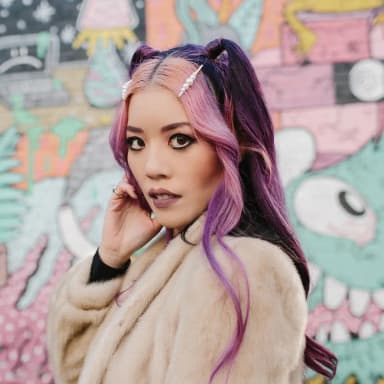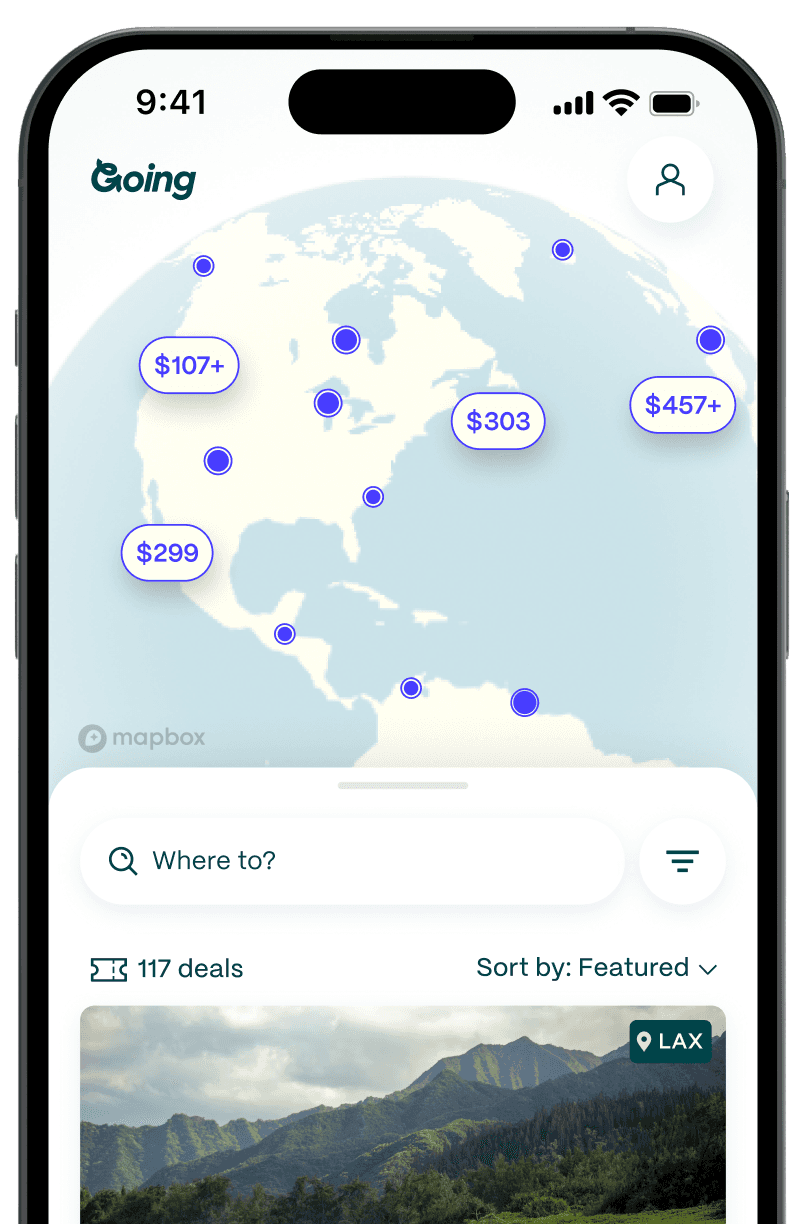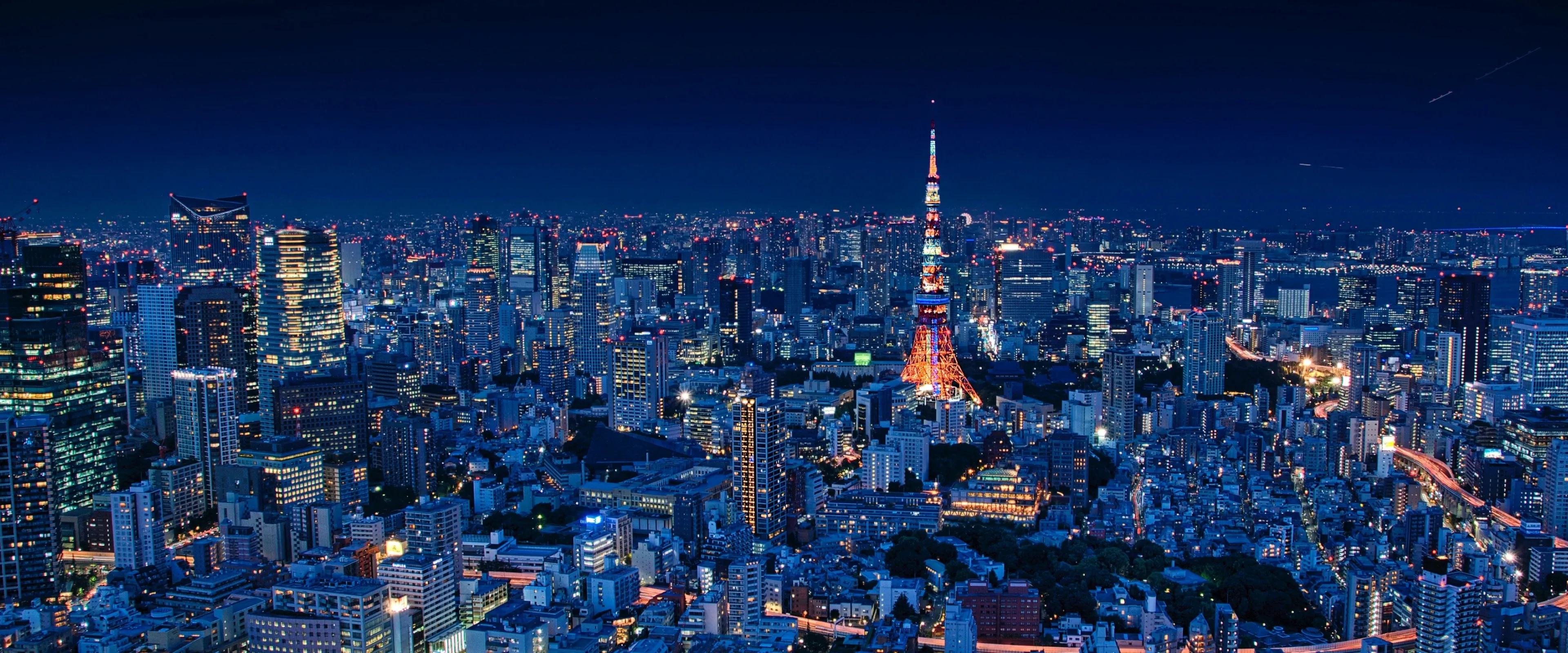
Tokyo Itinerary: How to Spend 3, 5, or 7 Days in Tokyo
Table of Contents
Whether you’re spending a couple of days or a week in Tokyo, you’ll never run out of thrilling things to see, do, and eat around the city. The Japanese capital is a study in contradictions: travelers may be surprised to see futuristic skyscrapers next to Shinto red torii gates and salarymen in business suits carousing after work in karaoke bars. A fast-paced, neon-lit, and fashionable metropolis, Tokyo has plenty of attractions to fit every travel style and budget.
Tokyo is an exceptionally captivating destination for those who love food, pop culture, and nightlife. If you’re a first-time traveler or only have a few days here, be sure to visit the most famous districts—Shinjuku, Shibuya, and Harajuku—and experience iconic attractions like Shibuya’s pedestrian scramble and Asakusa’s red temple Senso-ji.
Those spending a week in the city can take their time to explore lesser-known neighborhoods and enjoy offbeat activities, such as shopping for anime in Nakano and browsing vintage in Shimokitazawa. To get your trip planning started, here are suggested itineraries for three, five, or seven days in Tokyo, as well as where to stay and how to get around.

3-day Tokyo itinerary: How to spend 3 days in Tokyo
Day 1: Jpop culture, street fashion, and robot sushi
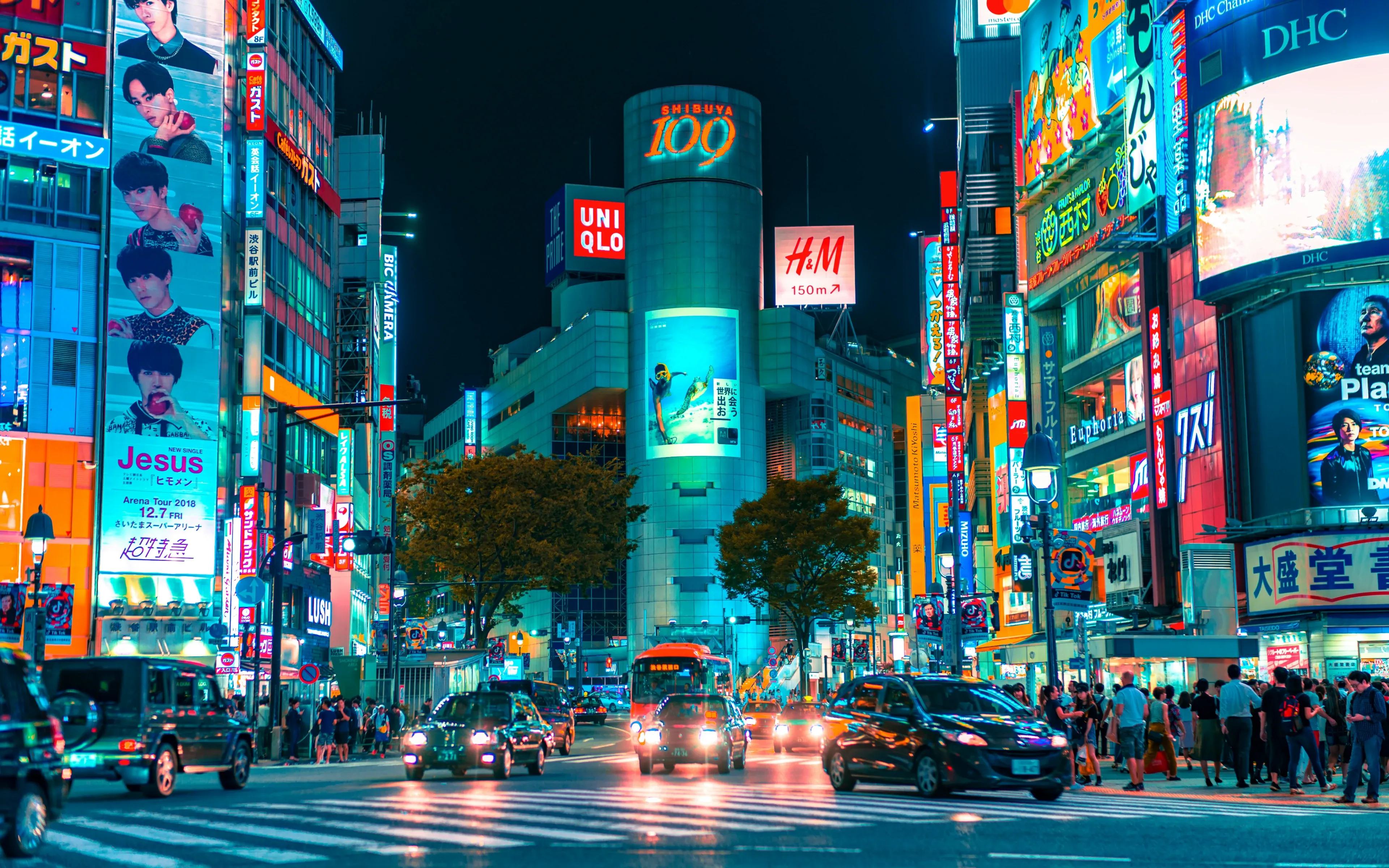
Start your trip by visiting three of Tokyo’s most famous neighborhoods—Shinjuku, Harajuku, and Shibuya—located only a few minutes apart on the JR Yamanote subway line. Begin in Shinjuku with a memorable meal at Fuunji; line up before 11am for a bowl of tsukemen, or chewy noodles dipped into a flavorful sardine, bonito flake, and kelp broth. Walk off the hearty lunch by strolling around East Shinjuku and Kabukicho, which are abuzz with neon lights and trendy stores. Give the big Hello Kitty statue a hug at Sanrio Gift Gate, see local designer fashion at Marui Annex department store, and stock up on makeup and craft supplies at Okadaya.
From Shinjuku Station, take the subway two stops south on the Yamanote line to Harajuku. The district has been known as Japan’s youth center since the 1970s and remains one of the best places to see Jpop culture and street style. Exit Harajuku Station and walk through the bright Takeshita Doori arch, and you’ll find dozens of alternative boutiques along the main path. Look for punk, Gothic, rave, and “kawaii” cute outfits at indie stores such as Takenoko, Yellow House, and AC/DC Rag.
When Takeshita Doori reaches Meiji Doori, turn right and continue until you reach Laforet. The department store has a dozen floors of experimental street style, including ruffled Gothic and Sweet Lolita dresses. Afterward, pick up a trendy snack from a Harajuku street vendor, such as a sweet crepe.
As golden hour approaches, ride the subway one stop south to Shibuya Station and snap a selfie with Hachiko, the beloved shiba inu dog statue. Join thousands of people in walking across Shibuya Scramble, the busiest pedestrian crossing in the world. Then, take the elevator up 750 feet at Shibuya Sky to see panoramic views and the sunset over the city (purchase timed tickets in advance).
End the evening with an inexpensive “robot” sushi dinner at Uobei or Katsumidori in the Seibu Shibuya department store. Use the tablet to select salmon belly nigiri, negitoro gunkan, and other favorites, click “order,” and the plates will zip out on the conveyor belt right to your seat.
Day 2: A Buddhist temple, anime, and fine dining
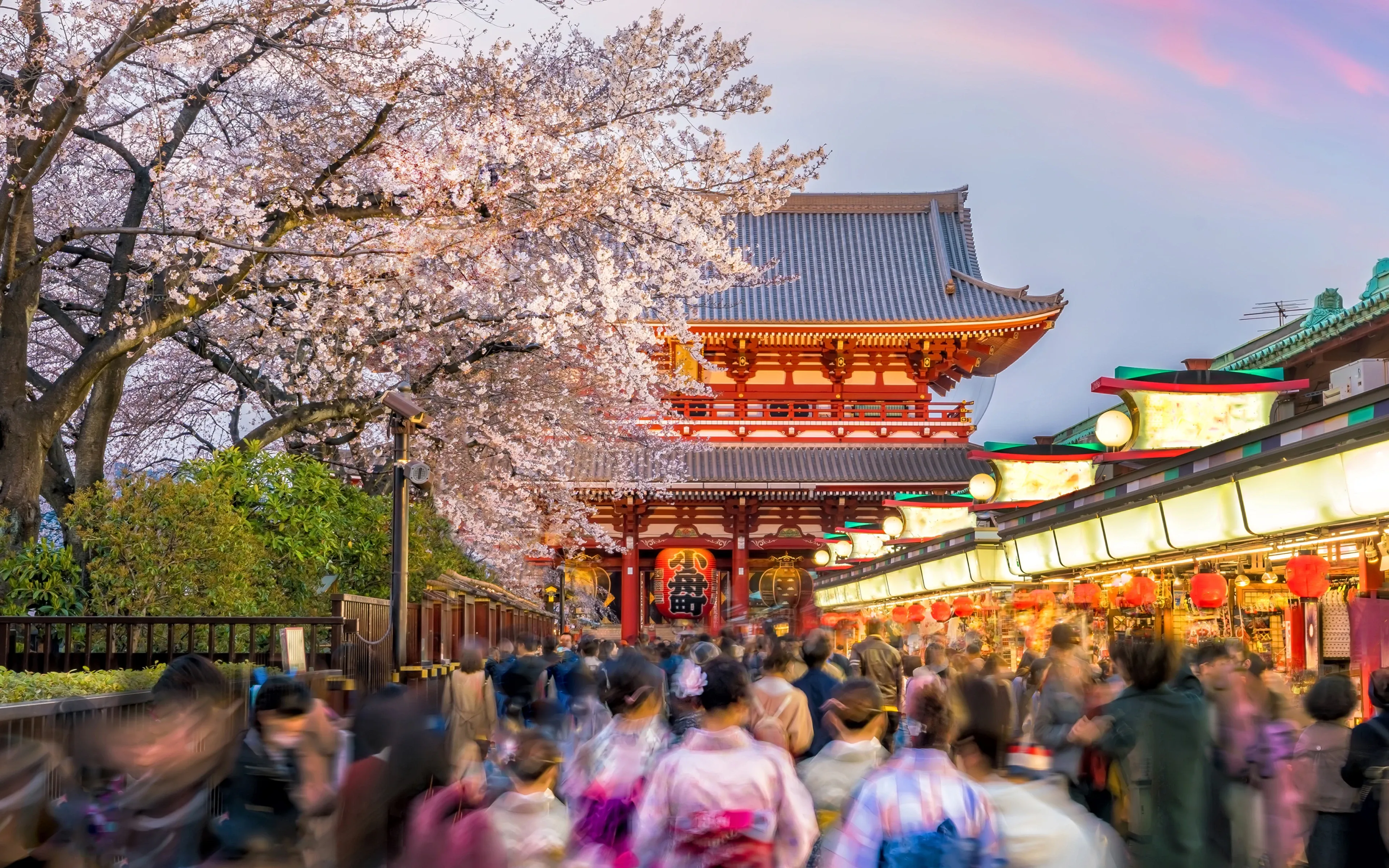
Wake up early to beat the crowds at Tokyo’s oldest and most famous temple, Senso-ji, dedicated to the Buddhist bodhisattva Kannon. Take the subway to Asakusa Station, aiming to arrive at 10am or earlier to avoid the rush of afternoon tourists. Bow at the stately Thunder Gate decorated with a giant lantern. Pass through it to explore the temple’s red-eaved pagoda and main hall, where you can see Buddhist rituals such as incense purifications.
After admiring the temple architecture, walk to the adjoining Nakamise shopping street to pick up spiritual mementos and artisan products. Find scarves, bowls, and handkerchiefs marked with lucky cats and daruma dolls, and try on a secondhand kimono at Tansu-ya. Snack on a freshly made taiyaki, or fish-shaped pastry stuffed with red bean paste, at Naruto or Sharaku. Finally, walk west to Kappabashi for Tokyo’s largest selection of fine kitchenware and home goods, including high-end sushi knives.
From Asakusa Station, take the Ginza line five stops southwest to Akihabara to experience a neighborhood with a very different vibe. “Akiba” or “Electric Town” is the gathering place for those who love nerdy pop culture, such as anime, manga, video games, and cosplay. Go to an arcade to take purikura photos and play UFO machine games. Find rare DVDs and figurines at multi-level stores such as Super Potato. When you’re ready for lunch, visit one of Akihabara’s many maid cafes, such as Maidreamin. Order the omerice or omelet-rice, and a French maid will use a ketchup bottle to decorate it with your name and smiley faces.
Return to Akihabara Station, and ride the subway three stops south on the Yamanote or Keihin-Tohoku lines to Yurakucho Station. Take a short stroll to Ginza to admire high-end fashion and jewelry, including the luminous pearls at Mikimoto. Browse the luxury designer stores at Ginza Six, a sleek mall with art displays and greenery throughout.
Then, splurge on fine dining for dinner. Ginza is home to elegant Japanese restaurants such as Tsurutokame, an omakase restaurant run entirely by women that serves seasonal seafood decorated with herbs and flowers from their garden. End the night with a craft cocktail at Bar High Five, customized from scratch by the bartenders to suit your flavor preferences.
Day 3: Fish market, immersive digital art, and a fantasy island
Get up at dawn to catch the action at Toyosu Market, Tokyo’s number one destination for fresh fish and seafood. Take the Yurikamome line to Shijo-mae Station, arriving around 5am for the tuna auction (apply online well in advance for a spot at the observation platform, or head to the free viewing windows). Be amazed by the variety of fresh-caught sea life on display at the various stalls, and then taste it with an omakase breakfast of about $40 at Daiwa or Sushi Dai, located in Toyosu’s warehouse.
Afterward, ride the Yurikamome line one stop to Shin-Toyosu Station to get immersed in digital art at TeamLab Planets. Reserve tickets through their website in advance (Planets runs until the end of 2023, while a permanent TeamLabs Borderless will open in late 2023). Wade through a calf-high pond of water lit with moving images of blossoming flowers and darting fish, and stroll through a digital garden with petals falling from every direction.
Return to the Yurikamome line and ride it nine stops to Odaiba-kaihinkoen Station. You’ll arrive at a man-made island called Odaiba that has VR games, theme restaurants, and other quirky pop culture attractions. Step back into the 1980s by playing arcade games at Tokyo Decks, and pose for silly photos at the Unko Museum (a tongue-in-cheek tribute to poop) and the Trick Art Museum (filled with optical illusion displays of Japanese ghosts and ninjas). If you want to be a swashbuckler, dine at the King of the Pirates theme restaurant—guests can dress up in peg legs and tricorn hats, and feast on black ink curry while pretending to steer a ship.
5-day Tokyo Itinerary: How to spend 5 days in Tokyo
Day 4: Park picnics, Roppongi art, and Tokyo Tower
After a few fast-paced days of exploring Tokyo, take it easy with a picnic in Yoyogi Park. Pick up snacks from one of Tokyo’s many convenience stores, such as Lawson, 7-Eleven, or Family Mart. Look for bottles of green tea and yuzu citrus juice, sweets such as Pocky sticks and mochi rice cakes, and onigiri rice balls wrapped with nori and stuffed with ingredients like salmon or cod roe.
From Harajuku Station, walk west to enter Yoyogi Park. Take photos at the scenic pond and the rose and cherry blossom gardens. If it’s a Sunday, you may run into the “Dancing Elvises” that bop to rock and roll while dressed like 1950s bad boys. After a picnic lunch under the trees, walk north to ring the bell at the Shinto shrine Meiji Jingu.
Make your way to Yoyogi Station and take the Oedo line three stops to Roppongi Station for an afternoon of museum-hopping. Purchase advance tickets to the Mori Museum, which has rotating exhibitions in various media, including paintings by Japanese artists such as Takashi Murakami. Swing by the Roppongi Museum for contemporary and pop art; the venue recently hosted a Sailor Moon retrospective.
For a delicious dinner on a budget, spend $6 on mouthwatering Japanese curry at CoCo Ichibanya or ramen at Ippudo in Roppongi. If you’re in the mood to spend, make a reservation well in advance at Sukiyabashi Jiro Roppongi Hills. The restaurant is run by the son of the world’s most famous sushi master, Jiro Ono, who delivers an exquisite omakase dinner for $135 to $200.
After your meal, stroll east from Roppongi towards the inimitable Tokyo Tower. The view from below the red and white tower is lovely at night. You can also purchase tickets to go up to the 500-foot-high observation deck to see the city's twinkling lights from every direction.
Day 5: Hipster shops and Shinjuku bars
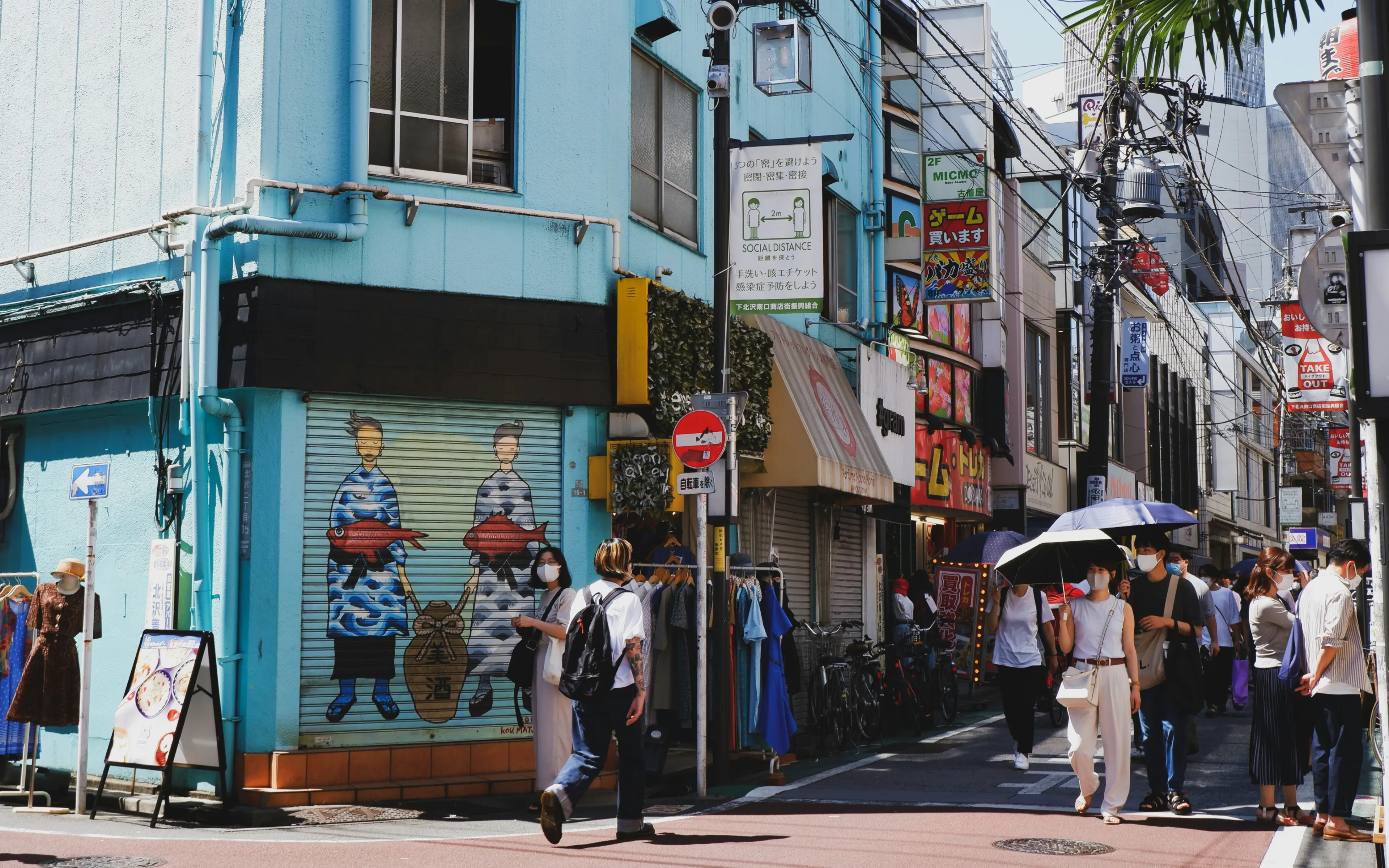
Spend a lazy day in Shimokitazawa, a hipster neighborhood known for funky thrift stores and cafes. If you start at Shinjuku or Shibuya Station, simply board an express train to Shimokitazawa Station, and you’ll arrive within ten minutes. Wander through the peaceful streets and shop for vinyl records, vintage fashion, and antiques. Look for secondhand kimonos at Chicago and dreamy hippie dresses at Haight & Ashbury. When you’ve worked up an appetite, pop into one of the many artisanal coffee shops, or dig into a stack of fluffy pancakes at Flipper’s.
After dark, take the subway to Shinjuku Station. Make your way through the tight, maze-like alleys of Omoide Yokocho to order a beer and yakitori (skewered grilled chicken) from one of the many food stalls. Then, walk east to bar hop at Golden Gai, a row of small streets packed with little bars. Many of them have curious themes, such as Deathmatch in Hell, which is decorated with heavy metal horror figures and only holds about a dozen people.
7-day Tokyo Itinerary: How to spend 7 days in Tokyo
Day 6: Omakase sushi and souvenirs
Ride the train to Shibuya Station and line up before 11am for lunch at Sushi Tokyo Ten. The first two dozen diners are rewarded with an omakase sushi meal, consisting of about 15 small plates selected by the chef and made with the freshest ingredients of the day, for under $40.
You’ll have plenty of energy to shop for souvenirs and cute mascot goods in Shibuya. Hit up 100 yen “dollar stores” like Daiso, and find every “kawaii” character imaginable—such as Miffy, Doraemon, Totoro, and Moomin—at Village Vanguard. Give yourself plenty of time to explore the floors of inexpensive and bizarre goods at Mega Don Quixote, which sells everything from cat-faced socks to skincare electronics. Go up the escalators at Shibuya 109 for young, trendy women’s fashion, and visit the sixth floor of Parco department store to find the Pokemon Center and Nintendo store.
In the late afternoon, take the train from Shibuya Station to Nakano Station. The main shopping strip, Nakano Broadway, is the go-to spot for all things “otaku” or geeky. Pose with pink alien statues, and shop for rare Astroboy lunch boxes and 1960s Godzilla toys. After the long shopping day, sit down at Okajoki to experience an izakaya, or traditional Japanese homestyle restaurant. You’ll feel as if you’ve stepped back in time as you drink hot sake from an iron pot and nibble on fish and meat grilled over charcoal.
Day 7: Day trip to Enoshima
For a change of pace from hectic Tokyo, take a day trip to Enoshima, a small and photogenic island south of the capital. From Shinjuku Station, it takes about an hour and a half to reach the island via the Odakyu and Enoshima lines.
Spend the day enjoying outdoor activities, including lounging on the beach and walking through the Iwaya Caves in the cliffs by the ocean. Pay tribute to Benten, the island’s goddess of good fortune and benevolence, at her Enoshima Shrine guarded by Buddha statues and red torii gates. Nature lovers can admire the flowerbeds and pagodas of Samuel Cocking Garden and ascend Sea Candle, a 200-foot-tall lighthouse with views of Mount Fuji on clear days. Before taking the train back to Tokyo, feast on local seafood and soak in the natural hot springs at Enoshima Island Spa.
Key Tokyo travel details
Where to stay in Tokyo
If you’re a first-time visitor or have limited time in Tokyo, look for accommodations in east Shinjuku that are a short walk from Shinjuku Station. This area has some of the city’s most outstanding restaurants, department stores, bars, and clubs—and Tokyo’s major landmark attractions are only a short train ride away. For a no-frills but clean and well-located business hotel, book a room at Sunlite Shinjuku (about $90 a night). Shinjuku’s chic Hotel Gracery is in the heart of Kabukicho and themed after Godzilla; there’s even a giant moving statue of the monster perched on the roof (rooms start around $130 a night).
Those with a taste for luxury might prefer to stay near Tokyo Station. The district has several five-star hotels that are close to Ginza and the Imperial Palace and provide easy access to the shinkansen, or bullet train. The Tokyo Station Hotel has an elegant European atmosphere and impeccable concierge service, with rooms from $385 per night. The Four Seasons Maranouchi ($900 a night) and Aman Tokyo ($1800 a night) are also known for their sophisticated design and amenities, from spa treatments to creative dining.
How to get around Tokyo
The best way to get around Tokyo is by public transportation. Tokyo’s metro system is efficient, affordable, and easy to use—but note that the trains stop running between around midnight and 5am. A subway ticket costs about $2 per ride, depending on the train line and distance. Visitors can load a prepaid Suica smart card with yen so that they don’t need to purchase tickets each time from the vending machine. Plug in your destination on Google Maps, and it will show you all the train routes, prices, and departure and arrival times.
Taxis and Ubers tend to be expensive in Tokyo, particularly in the late hours. Rental cars are not recommended as they are very pricey, and parking is difficult and expensive in the city; people also drive on the left side of the road, which may make driving tricky for North Americans. If you’re taking a day trip from Tokyo, stick to trains and buses for a cheaper and less stressful experience.
When to go to Tokyo
Tokyo’s weather is similar to that of the American east coast: summers are hot and humid, while winters are cold with snowy days. Spring is a lovely time to visit Tokyo, although prices tend to be higher around cherry blossom season (late March to April), and tourists tend to come during this peak season. Every year, Japan has a national holiday called Golden Week between April 29th and May 6; tickets and accommodations tend to be booked up during this time.
Late September to November is one of the best times to visit Tokyo. The city is beautiful in the fall, and travelers benefit from cooler weather and lower prices. In the month before Halloween, you can shop for limited-edition cute meets spooky character goods and snacks and dress up for costume parties.
See Going's deals on flights to Tokyo, and join today to get cheap flights from all over the world delivered right to your inbox.
Plan your trip to Tokyo
Last updated August 14, 2025
Articles you might like
View All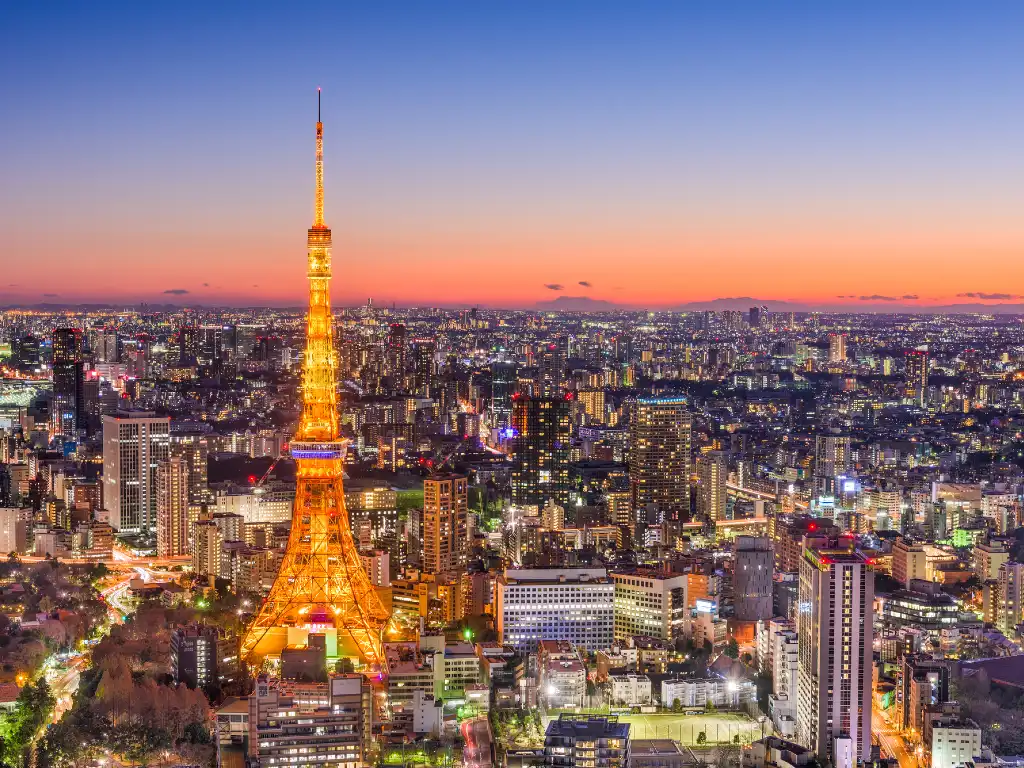
Where to Stay in Tokyo: The Best Neighborhoods and Hotels in 2026
Dec 19, 2025
12 min read

Where To Stay in Seattle: Best Neighborhoods and Hotels for 2026
Dec 19, 2025
10 min read
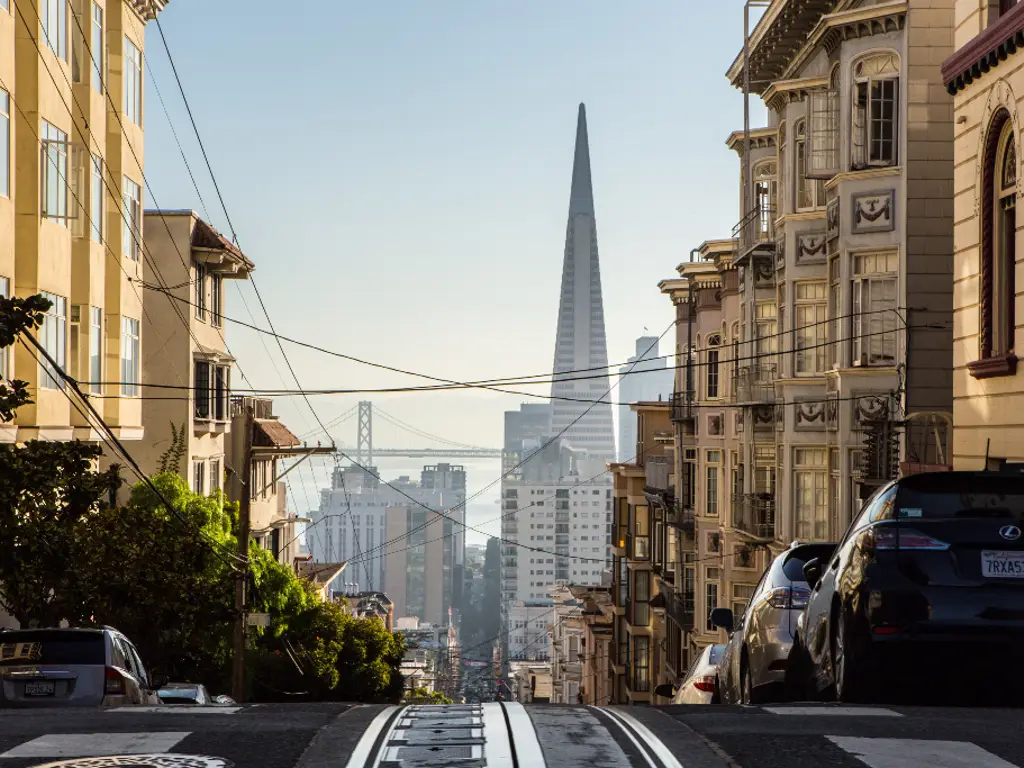
Where To Stay in San Francisco: Best Neighborhoods and Hotels for 2026
Dec 19, 2025
17 min read

